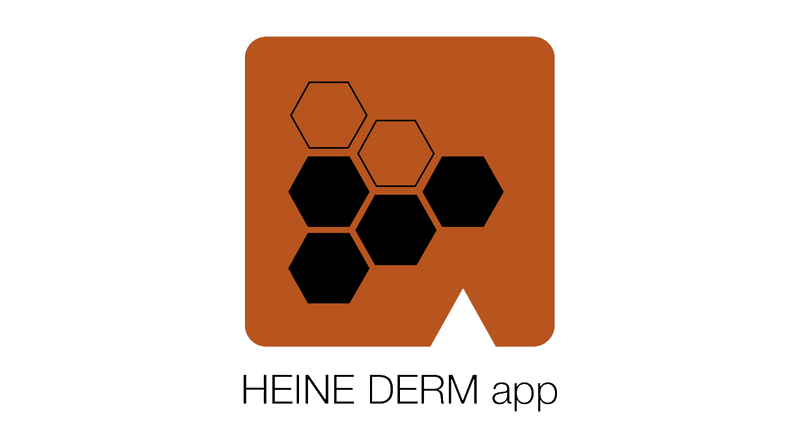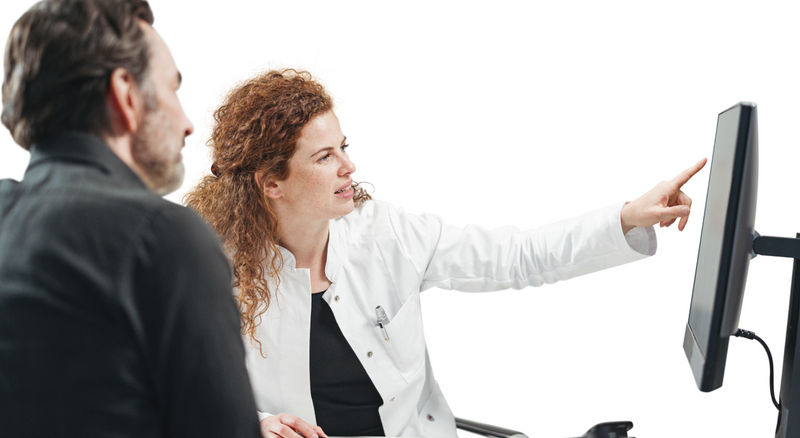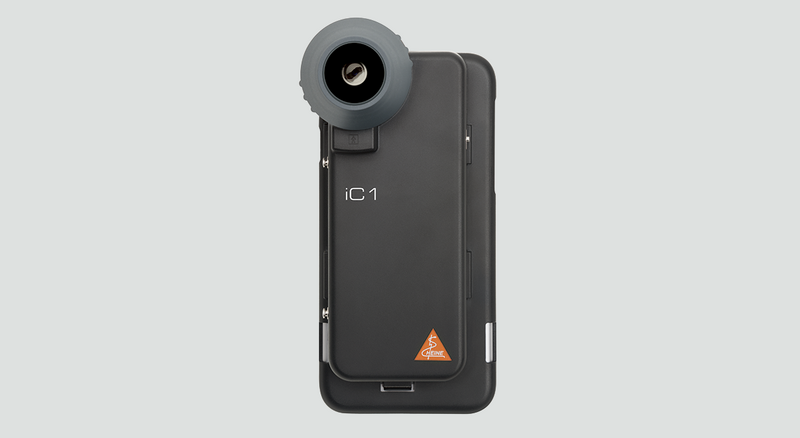Skin cancer screening guide
One step at a time – including documentation
1. Inspecting the patient – looking for the ‘Ugly Duckling’
First of all, the (undressed) patient is macroscopically examined all-over as part of the skin cancer screening process.
Particular attention should be paid to the scalp, the mouth and throat, the palmar and plantar, and the genital area.
Macroscopically peculiar naevi can be marked with a pen or assessed directly with the dermatoscope.

2. Dermatoscopy of macroscopically peculiar naevus
Naevi that are inconsistent with the patient’s usual macroscopic pattern are referred to as ‘Ugly Ducklings’ and need to be examined more closely with a dermatoscope.
Algorithm for the differentiation of melanocytic and non-melanocytic skin tumours
Documentation is usually unnecessary if a naevus is considered normal.
But if documentation is still desirable, a relevant naevus can also be documented in the HEINE DERM app and marked as normal with the green mark.
Peculiar naevi should be documented preoperatively or for the subsequent follow-up examination.

3. Documentation in general
Documentation is useful for macroscopically and dermatoscopically peculiar naevi:
During the examination, the practitioner must decide whether direct excision is necessary if clear malignancy criteria are met, or whether a short-term follow-up visit (e.g. after 3 months) would be reasonable if there is lower atypia and thus slight suspicion of malignancy.
- Preoperative findings of a naevus to be excised
By examining both the documented images and the histological findings, the practitioner can better compare the clinical and dermatoscopic findings in retrospect than they’d be able to from memory alone.
- Naevi requiring a follow-up examination
The initial naevus findings must be recorded in a structured manner and in high quality for the subsequent follow-up visit after a set period of time, and must be permanently assigned to a patient. The HEINE DERM app makes documentation and clear patient assignment extremely easily – unlike the traditional approach with almost endless folder structures on a computer or multiple camera systems.
More Information

Easy management of digital images, comments and data.

Digital monitoring: Easy. Efficient. Safe.

The digital dermatoscope.

Uniting diagnostic precision and mobility.